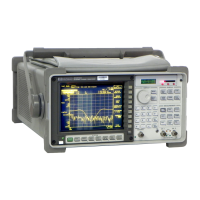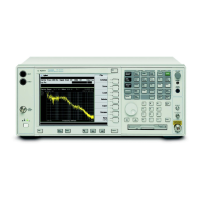To Obtain the Best Curve Fit Results
Start by making the best frequency response
measurement possible.
This is very important.
Select a source type and window function to
minimize leakage and distortion. Use a Burst
Random or Burst Chirp source with a Uniform
window, or a hammer with a
Force-Exponential window, or Swept Sine.
Adjust source magnitude for the most linear
operating region.
In all but the Swept Sine instrument mode,
use as many averages as possible. Ideally,
the coherence function should be near unity
at all frequencies of interest.
Choose the frequency span to cover the
smallest range of interest. Make separate
measurements on each region of interest, if
possible. Avoid cases where the band of
interest is in a very narrow region of the
chosen span, if at all possible. Also, avoid
large zoom factors. Baseband measurements
are easiest to fit. A rule of thumb is to have
at least 8 spectral lines across the half-power
band width of a resonance. You should not
allow more than 0.2 dB change from one
frequency bin to the next frequency bin in the
measured data. A smaller delta f (line
spacing), will usually fix both problems.
Unless previous experience indicate
otherwise, use the Auto Weighting function
and the Max Order mode. Then watch the
fit quality and the corresponding orders.
Note the orders that give the best fit, and
then specify these in the Fixed Order mode
for a closer inspection. Also, small changes
in the fit region will not affect the dominate
poles and zeros, but may alter extraneous
ones.
Always allow a few more poles and zeros
than the expected number, to help take care
of tails from out-of-band poles, and from
other sources of noise, distortion, and
interference. These extra roots will often
cancel one another in the curve fit table.
The valid roots are usually fairly obvious by
comparing the table entries to the original
data. Do not be concerned about right
half-plane poles if there are matching right
half-plane zeros. If a pole is removed, the
gain constant must be readjusted by dividing
by the negative of the pole value. Likewise,
if a zero is removed, multiply the gain
constant by the negative of the zero value.
If matching pole-zero values are removed it
is good practice to resynthesize the fit, to be
sure that it is still acceptable (transfer the
curve fit table to the synthesis table and
adjust the gain constant, if necessary).
(Continues on next page)
Agilent 35607A
Operator's Guide Curve Fit Option 1D3
16-25

